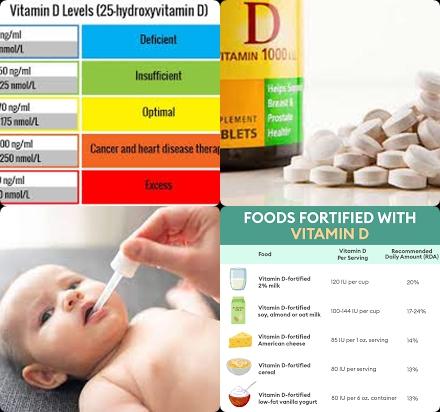
Objectives:
What is the efficacy of vitamin D fortification and supplementation in children?
Study design:
This review article included 31 studies.
Results and conclusions:
The investigators found significant raises in circulating 25(OH)D concentrations were observed in both groups that took vitamin D supplement [MD = 28.7, 95% CI = 22.5 to 34.9] and vitamin D-fortified foods [MD = 20.29, 95% CI = 13.3 to 27.2].
The investigators found the meta-regression revealed a significant association between age of participants [B = -1.4, 95% CI = -2.8 to -0.02, p = 0.047] and dose of vitamin D [B = 0.007, 95% CI = 0.003 to 0.01, p 0.001], with the effect on serum 25(OH)D concentrations.
The investigators found that serum 25(OH)D concentration increased by 0.7 nmol/L for every 100 IU of vitamin D intake after adjustment for age, baseline serum 25(OH)D and latitude which is far less than the reported amount in adults.
The investigators concluded that serum 25(OH)D concentration increases by 0.7 nmol/L for every 100 IU of vitamin D intake. These findings indicate that in a mass vitamin D fortification program, circulating 25(OH)D concentration response in children may be lower in children than in adults and vitamin D supplementation may still be needed in this subpopulation.
Original title:
How Much Does Serum 25(OH)D Improve by Vitamin D Supplement and Fortified Food in Children? A Systematic Review and Meta-Analysis by Nikooyeh B, Ghodsi D and Neyestani TR.
Link:
https://pubmed.ncbi.nlm.nih.gov/34520402/
Additional information of El Mondo:
Find more information/studies on RCTs/cohort/significantly/review article, food fortification, vitamin D and malnutrition right here.